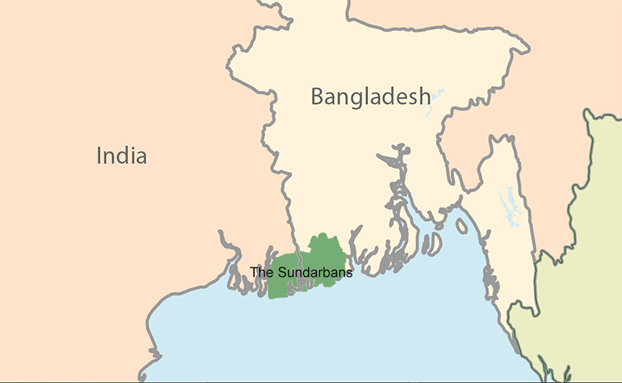Rapid Fire Current Affairs | 18 Apr 2023
Blastomycosis
Blastomycosis is a rare fungal infection caused by the Blastomyces fungus that is found in the midwestern, south-central, and southeastern states of the US. The fungus is typically present in moist soil and decomposing wood and leaves. The fungus is endemic to Michigan state, US.
The disease is contracted by inhaling the spores of the fungus, which can be dispersed in the air if the soil is disturbed. Symptoms of blastomycosis include fever, cough, breathing difficulty, and muscle aches, with severe infections potentially spreading to other organs such as the skin, bones, and brain. While antifungal medications are available for treating the disease, the course of treatment can be long-lasting, lasting between six months and a year.
Read more: Fungal Infection - Mucormycosis
Declining Tiger Population in Sundarbans
The Sundarbans, home to the largest mangrove forest in the world and one of the last strongholds of the Bengal tiger, has slipped in its ranking among India's tiger reserves.
Despite a rise in its tiger population, the Sundarbans has been ranked 31st among the 51 tiger reserves in the country for forest management, according to the recently released Management Effectiveness Evaluation (MEE) report. Lack of adequate manpower and the vulnerability of the location to climate change and submergence from sea level rise has been identified as the major challenges. However, the Sundarbans have been doing well in containing major problems like poaching and tiger-human conflict.
Periyar in Kerala was the top-ranked tiger reserve with a score of 94.38%, followed by Satpura in Madhya Pradesh with 93.16% in the MEE report. The MEE report suggested that area development committees need to become functional under divisional commissioners to monitor illegal tourism, and more management coordination is required between India and Bangladesh Sundarbans forest areas.
Sundarbans, including the forest covering both the present tiger reserve and South 24 Parganas district, have been under increasing climate change impacts, and it is important to carry out the related assessment.
Read more: Sundarbans, Tiger Census 2022
Telecom Regulatory Authority of India (TRAI)
The Telecom Regulatory Authority of India (TRAI) has released a Consultation Paper on "Issues Related to Low Power Small Range FM Radio Broadcasting". It seeks to gather feedback and comments from stakeholders on the need and timing for the introduction of a new service provider for the drive-in theatre application, as well as on issues related to low-power short-range FM radio broadcasting.
Such broadcasting is considered an effective method of sound broadcasting for services intended for limited locations and reception areas, such as hospital radio services, amusement parks, business premises, closed communities, small habitations, and local events.
TRAI regulates telecom services including fixation/revision of tariffs for telecom services which were earlier vested in the Central Government.
Read more: Telecom Regulatory Authority of India (TRAI)
Global Conference on Compressed Biogas (CBG)
Recently, the Indian Federation of Green Energy (IFGE) organized a Global Conference on Compressed Biogas (CBG), in which the Union Minister of Petroleum & Natural Gas and Housing & Urban Affairs highlighted the importance of domestic production of biofuels.
This is seen as a key strategy in reducing the import of fossil fuels and ultimately achieving the goal of net zero emissions. CBG production offers several benefits, including the reduction of natural gas imports, GHG emissions, agricultural residue burning, providing remunerative income to farmers, employment generation, and effective waste management. Additionally, the byproduct of CBG manufacturing, Fermented Organic Manure (FOM), may be applied in the agricultural sector to encourage organic farming and lower the usage of artificial fertilizers.
India has set a target to increase the share of gas in the energy mix to 15% in 2030, and the speedy expansion of CBG will help in meeting the additional requirement from domestic resources. The Sustainable Alternative Towards Affordable Transportation (SATAT) Scheme, which explores various waste streams as feedstock for CBG production, was highlighted in the conference. India aims to set up 5,000 commercial CBG plants by 2024-25 and produce 15 MMT of CBG.
The government is focused on developing a conducive ecosystem to promote sustainability for all actors of the Triple Bottom Line (environment, society, and economy), and the recently announced Amrit Kaal Budget 2023 provides a significant boost to India's Biogas and clean energy revolution.
Read more: Compressed Biogas (CBG)

